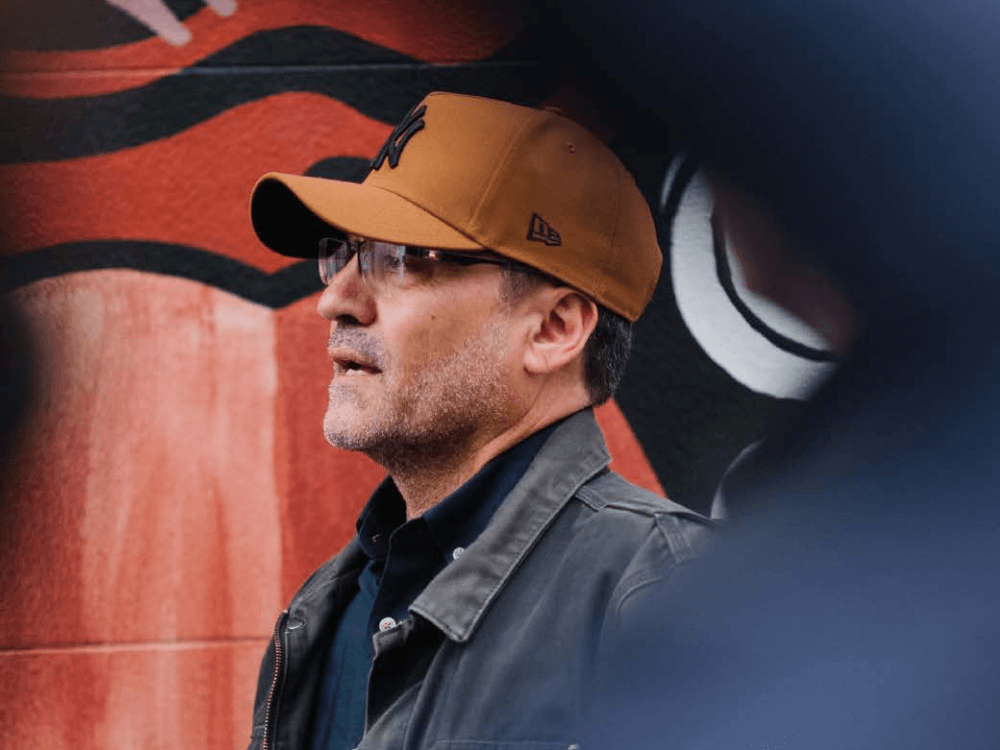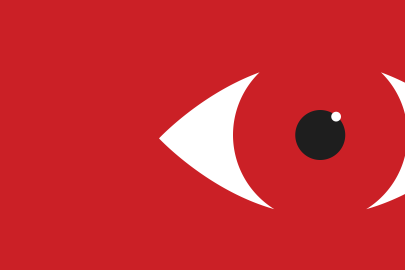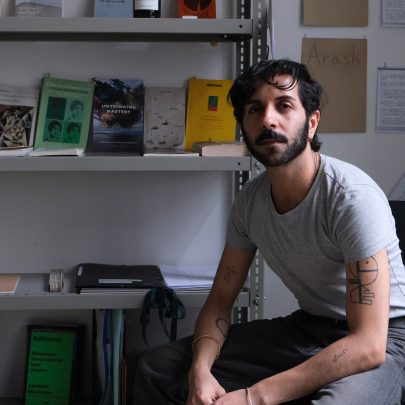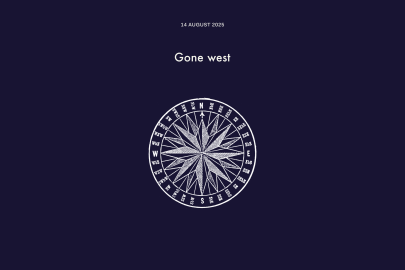Jun 22, 2021 Arts
Britomart sits on the edge of the waterfront, on top of a reclaimed harbour that Ngāti Whātua Ōrākei once enjoyed as Te Rau Kai — a place where food was gathered and trading with early settlers took place.
Today, the precinct is a beautifully designed space that encompasses high-end stores and a new hotel. It’s also — thanks to the foresight of Peter Cooper, the founder of Britomart’s developer, Cooper and Company, and Jeremy Hansen, Britomart’s marketing project manager — a place where artists Shane Cotton, Charlotte Graham, Lonnie Hutchinson and Lyonel Grant all have exhibited work. The art is inescapable. It literally wraps the wall of a heritage building, swings from within the southern atrium, caresses the modern storefront adjacent to the Britomart Hotel and holds court in digital form in Takutai Square.
While most of the works are temporary, Cotton’s piece Maunga — a satellite art installation that links the Britomart precinct with the Toi Tū Toi Ora: Contemporary Māori Art exhibition (currently on at Auckland Art Gallery Toi o Tāmaki, showcasing works from some of our most celebrated contemporary Māori artists) — is permanent. Cotton’s epic artwork covers the entire westward wall of the Excelsior Building on Commerce St. The permanent five-storey concrete canvas is adorned with a series of 25 pot motifs, each of which is a unique representation of maunga and places significant to Cotton.
In September last year, I drove to Russell to meet Cotton and talk about the then-impending Toi Tū Toi Ora exhibition and the Britomart work for a documentary I am making. I was lucky enough to visit him on a day when he was working on one of the individual pots for Maunga as well as a small dinghy, poised to take centre stage for the Te Haerenga / The Passage intervention he co-curated with Nigel Borell for Toi Tū Toi Ora.
Russell is a quaint town with one of the oldest colonial histories. It feels like a world away from Te Papa-i-oea Palmerston North, where Cotton’s large art studio remains. But Russell is just across the water from Paihia, where he has whakapapa links and many childhood memories. Nestled among the shoreline restaurants and early markers of a settler colony is Christ Church, Aotearoa’s oldest-surviving place of worship, built in 1835, and the landmark he tells me to look out for to find his place.
It’s ironic, given Cotton’s extensive past exploration of Toi moko (mokomōkai), the ancient preserved heads of Māori. All I can see now is the image of Te Wheke (played by Anzac Wallace) holding up the decapitated head of the Reverend in the acclaimed film Utu. Te Wheke held the head of colonial power in his hand, Cotton holds the power in the brush. Now his home literally looks down on the church.
As I walk up the driveway to find him working, Cotton apologises for his makeshift studio. It’s a carport with a leaky roof — he smiles remembering days when he almost lost work because of an unexpected downpour. It’s such a gorgeous day when I arrive, it’s hard to believe the Far North has any other weather.
The half-painted dinghy he is working on for Toi Tū Toi Ora sits patiently waiting for Cotton’s next brush stroke. In its imagined wake, the individual pot motif paintings are carefully wrapped, ready to be sent to Britomart. He has a couple more to finish; one sits poised for completion. Unlike Cotton’s pot motifs of the past, which have a purposely aged palette, these works command colour and celebrate the potential in the blacks, a narrative where the creation story embodies the potential in the nothingness, Te Kore, Te Pō.
Maunga has been created by a collaborative process. From the individual paintings, projected images were cast onto the concrete canvas, the outlines drawn then carefully replicated in colour to match each beautiful work on paper. Cotton worked with artist Ross Liew to realise the epic project. It’s daunting, as Cotton has never collaborated with another artist to portray his works before. We spent the afternoon discussing Cotton’s work, the Toi Tū Toi Ora exhibition and the nature of collaboration.
Chelsea Winstanley: How did the Britomart satellite show come about?
Shane Cotton: I got approached through Michael Lett [Gallery] to put forward a proposal for painting something on their wall. There were a few other proposals that I did, which I really, really liked [referring to his well-known Toi moko fi gures], but I think they thought this one was [he chuckles] more appropriate. This has a whole backstory in terms of all my work that I’ve ever done, and I was wondering if they [Britomart] could accept the head.
What’s the story behind the dinghy and its connection to the pots?
All these different kinds of pots, of different places, will all take a position on the wall to encompass the idea that when you get to Auckland, maybe we’re not from Auckland, we take a piece of that place with us and take a little bit of our pot with us. It’s appropriate for me, the idea of a vessel and the idea of the pot image, which I’ve worked with over the years, and the way that those things kind of carry the idea of voyage and carrying ideas from one place to another … They’re all really about the way that we travel now, the way that we’re not sort of really stuck in one place. It’s very much a thing of our times, that we were born in one place, but we get to live somewhere else. So that place where we’re born, that’s always with us; we carry it with us. It doesn’t matter where we are, we’re still who we are. And I think that’s very much about what it is to be a Kiwi. So each one of those pots will be kind of representative of those notions and those ideas.
Having Māori agency over our own critique is important for the growth and discussion of contemporary Māori art. How do you see it?
We create our own knowledge about Māori artworks for Māori people to digest and have a discussion about. I like the idea that, in terms of a body of work for a Māori art historian, there are lots of issues that they could discuss or propose or debate or argue and critique.
It’s very hard for an individual person to tackle because there’s just so much historical baggage — decades of stuff that’s just been piled on top — but at some point you’ve got to start somewhere and I think it’s about creating a diversity within contemporary Māori art. We want depth in our critique. We’re not going to be contained by a tricolour kōwhaiwhai image. We know that there’s a lot more going on.
That’s why I love painted houses [wharenui], as a painter. You look at the painted house and quite often they’re very, very different from the carved houses, because the images are so idiosyncratic. You might see tiki forms and things like that but they’re kind of screwy, they’re sort of mixed up, and that’s the beauty of them. They don’t have to conform to a certain way, they’re just kind of in the moment. And that’s true artistic expression in a sense. That’s what I love about it, to see tiki be that colourful, expressive.
Especially on the East Coast, in the Tūhoe area, all those painted houses have been very inspirational for me, because they’re painters as well. It’s only in recent times that a lot of that kind of mahi has become recognised in a way — not that it needed to be recognised — but recognised as a kind of viable actual art history that has been important to the development of our art, our art thinking and way of making. And what’s surprised me is that in the mainstream anyway, when we look at our Māori art history, maybe we’ve overlooked that work a wee bit too quickly.
That’s what I like about Cliff [Whiting] and Para [Matchitt] and Emily [Karaka] and that generation of people — they quite oft en pushed against tradition a wee bit; they actually pushed at it quite hard. But that was only done in a contemporary way; it wasn’t done within the schools of carving. That’s what I like about those guys. I think they just didn’t want to be limited by that kind of strict doctrine of making, they wanted to explore other avenues and they weren’t afraid that if they borrowed a bit from Western art that it might curtail or shrink their creativity — they weren’t afraid of it.
So there’s a sense of freedom in their work?
Yes, because it works really well. I mean, it’s Māori art, one, because they’re Māori and they make it. And, two, because the Māori audience buys it. The Māori audience sees it’s not diluted in any way. It’s a contemporary form, but it doesn’t rely so heavily on the tradition.
Are there others from that time who inspire you?
Arnold [Manaaki Wilson] is still one of my favourites. It’s the way that they kind of walk this fine line between the narrative that probably comes out of a tradition but it’s pushing somewhere else. He’s taken certain aspects of those things and used them to his advantage to create something that’s just a wee bit different to your normal understanding of what a pou should be. Maybe because that’s the time I live in, a time when we build in a hybrid kind of way, and a lot of that work reflects that change, a hybrid kind of situation, and even more so now because we’re basically one village, globally.
I suppose in many ways, the question is, at what point does it step too far out? Ralph [Hotere] most probably went there on many occasions. But it keeps you wondering. You have to go back and have another look. You’ve got to go back. You don’t get all the answers in one hit.
With the scale of Toi Tū Toi Ora, how important is it for contemporary Māori art to have the largest footprint the gallery has ever given it?
That’s a bit daunting, actually, when I think about it. But I think Nigel [Borell] is up for the challenge. So much work has happened in the last two decades. It will be a good time for the audience to be able to gauge what’s been going on and just how much the whole contemporary Māori art scene has changed.
What are some of the biggest changes you have noticed?
There’s certainly a lot more of us that are gaining recognition outside of New Zealand. They are doing things internationally and they’re doing it in their own way. They’re not going through normal channels, and that’s pretty exciting. They’re making connections with other indigenous people; that’s something that’s been going on for quite a few years, but there’s a whole group of younger artists that are making and securing those kinds of ongoing indigenous connections. There is a lot happening and like the BMVA [Bachelor of Māori Visual Arts degree], the course that I was involved with at Massey, I can be proud to say I think that has helped somewhat towards the way the whole contemporary Māori art world has flourished.
How important is a show like Toi Tū Toi Ora for emerging artists?
What I like about shows like this is you get to see what artists are doing. Artists can sit next to each other and you can start to make sort of comparisons and see things and you can see differences and similarities in terms of what they’re doing with their mahi. But it’s also an opportunity for a lot of younger artists to be showing with our most senior people.
You’ve been labelled as part of the “young guns” and those of you in that group — Michael Parekōwhai, Lisa Reihana, Brett Graham and others — have had vast international success. Is there a danger in labelling artists? Does it create an elitist group that serves the mainstream audience but keeps others out?
The mainstream art world is a gatekeeping world. I mean, you have to cosy up to curators, you have to cosy up to collectors; that is a part of the art world. Not a lot of those doors are open to Māori artists. A lot of those doors become open to Māori artists through shows like this. I don’t think it’s easy for a lot of artists of contemporary Māori art to actually get involved in that because they are overlooked, and there’s many reasons why they are overlooked. But I think it’s changing because you’ve got Māori people working in galleries that are working for Māori, or working to promote the Māori voice or vision. But even then, some of those people are a wee bit hamstrung in terms of what they can and can’t do. My perfect sort of world would be that Māori artists just compete and participate in the art world — what they do is what they do; you don’t need the “Māori” bit so much. It’s very embedded within the Māori world, but it’s accepted as a visual art form. It has its own visual art form.
Which is why I got really excited about the BMVA, because I thought, well, if we can create a group of students who are pushing the boat out a wee bit, in terms of what stuff is or what it can be, it’s going to widen the definition of what Māori art is.
I still think there is an issue for some people, art historians or academics, who question the authenticity of what and when something is Māori and when it isn’t. What defines Māori art? What is that? And when you go down that route, then it becomes categorised, so there’s always that issue you deal with as a Māori artist. Like, on the one hand, you want to be in the general group, but you want it to be different, too — you kind of want your cake and eat it, too.
That’s why it’s interesting. You’ve got Māori writers, curators and people who critique Māori art and then those people connect with the mainstream and then they inform and then it starts to really mix.
Ngataiharuru Taepa’s work or even Saffronn [Te Ratana], you could take any one of those artists’ [pieces] and stick it in the contemporary show and it will just look like contemporary art. That’s cool, because if you think about someone like Gordon Walters, he used the Māori art form that created these very sort of modernist interpretive kind of images as kind of Māori in a sense, but he’s European, so it sits in that high-art category. Well, we’ve got kōwhaiwhai painters like Sandy Adsett, Ngatai, who sit in that realm, I believe. So if you can cross it that way and we accept it for what it is, I’m pretty sure it can work the other way.
Why have we accepted Gordon Walters’ interpretation?
Well, some people haven’t accepted it, but I accept it as an art form. I accept that work as one of the great New Zealand artworks. It would be nice if the same level was given to Sandy [Adsett’s] output. It’s actually on the same level, to be honest.
Then you have the Frizzell with appropriation. Are you okay with it?
I’m not okay with a lot of what Dick Frizzell has done. I have questions around that. But I think Gordon’s a wee bit different. I’m not really okay with what McCahon’s done, although I’m okay with some of those things.
What does it mean when you say, “I’m not okay with it”?
I don’t think there’s a real understanding of what it is that is actually going on there. I think he’s just used something without sort of understanding a lot about it, you know? But if I look at Gordon Walters, I think maybe there is, because there’s this simplification in terms of the generic form. He’s actually just looking at the aesthetics of that work. With my generation, maybe the European audience was looking more like they wanted to actually know. You had curators like Robert Leonard, who were young, the same age as myself, who were sort of looking at what Māori artists were doing, and trying to feed that kind of information, ideas or concepts into the bigger New Zealand art world. And I think that’s why we — Lisa [Reihana], myself, Michael [Parekōwhai], Peter Robinson, Brett Graham; there’s heaps actually — were sort of latched onto in that respect.
Do you feel hopeful then that there are people like Nigel, Megan Tamati-Quennell, Ngahiraka Mason, occupying these spaces of curatorship and critique?
Yeah, but I actually think it’s the artists that will do it because they’ll just make good art, they’ll make art that you just can’t ignore. I think nowadays we don’t care how others define what it is that we do. Māori define what it is that they do. It’s that we define what Māori art is and we define it because the audience says it is. If the audience says it ain’t, then it ain’t. But we are having to understand those definitions ourselves; that’s part of what it is to actually grow the whole Māori art world because we find different ways. If we want to say it’s this today, it is that today, but it ain’t going to be that tomorrow [he chuckles], that’s just how it is. That’s how it should be, so it’s malleable. It ain’t “Contemporary Māori art can be defined as this and this and this”. Nah, it doesn’t work like that. It’s what we say it is.
And whatever we want it to be in the future?
Yeah, whatever we want it to be in the future. Because I think that’s one of the things we’ve always had to really struggle with — that we’ve had to define it for others, whereas we’ve always known. There’s this notion that to be Māori, you’ve got to be a certain percentage. Well, in the Māori world it doesn’t work like that. If you have an ancestor that’s Māori, it doesn’t matter if they’re way, way back, you’re Māori in the eyes of the Māori world, because you have Māori blood running through your veins. That’s what it is, you whakapapa to Māori. It’s not a numbers game. And it’s the same definition for art — it’s how we define it as what we say it is. You accept it or eff off , to be honest [he chuckles].
It’s about having a critical mass. You have more participants, you’ve got more makers. So then you’ve got more people writing. You’ve got more people curating shows. You’ve just got more people that are involved and actually building that world. And that’s really sort of what needs to happen. I actually think it is happening. Like making art, for Māori it’s almost normal, like whether you’re weaving or composing waiata or you’re writing or whatever, it’s just like a natural process.
You’ve just got to find ways to keep pushing, to find ways to actually find out about it, but it’s very sort of natural for us to actually be creative, to make stuff . That’s why this show is important. That’s the beauty of the title of the show. When you’re making art, you’ve got life. When you have art, it’s like any culture: when the art’s healthy, the community is healthy. It sounds waffly, but it’s true because you’re in a position to freely express what it is, to freely express things that aren’t necessarily the norm within society, things that just come out of the blue, that come out of the imagination. So when you’ve got a healthy, critical mass of that happening, you’ve got a society that’s engaging in aspects of itself.
What’s good for Māori is good for everyone?
Yeah, I reckon. New Zealand is taking on a lot of kaupapa Māori. It’s actually working in their favour. Like Matariki. To be honest, I never knew a lot about Matariki but over the last couple of years, this Māori kaupapa and this Māori knowledge is making me take the time to pause, look at the sky and just have a moment.
At the end of October, I meet Cotton at Britomart as the initial stage of the wall installation takes place. The wind is strong that night and we watch as Ross and his team swing precariously from a cherry picker, carefully placing the images as per Cotton’s request, drawing the outline from the projection. It’s nerve-wracking to watch.
Over the weeks to follow, Ross communicates with Cotton, ensuring the colours are correct and that the size and placement are working in unison. On 3 December, Britomart was blessed by Ngāti Whātua. Cotton stands by his collaborative epic masterpiece and mihis to those involved in the project. He finishes with the Ngāpuhi anthem, Ngā Puawai o Ngāpuhi.
Maunga is a work that unapologetically gives the cityscape of central Auckland an incredible gift. We are all lucky to have Cotton’s vessels to remind us of the pūrākau and their importance in our Māori art narrative.
While working on the documentary, I send Cotton a picture of a new pot I’ve been drawn to. It’s a sneaky add-on he didn’t initially share back in Russell. Mauao from Tauranga Moana, where I whakapapa to, has found a permanent home among other places of significance for Cotton. Ngā mihi nui ki a koe e Shane. I’m unashamedly biased; it’s my favourite.






